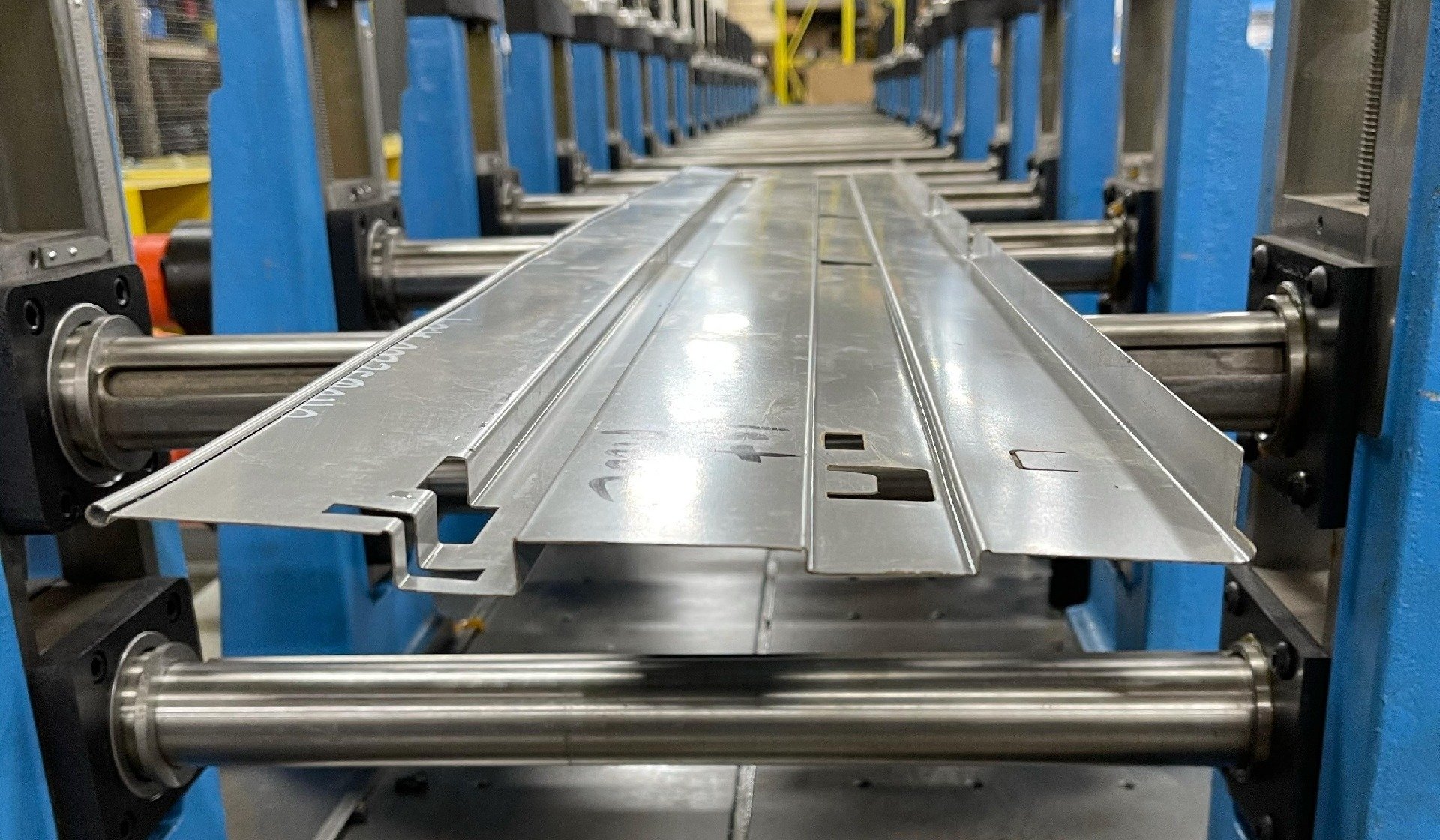Pre-Cut vs. Post-Cut Roll Forming System Design
Usually in the roll former, if you're running pre-cut, there are more forming stations. The rule of thumb is 25% more forming stations than if your operation runs from coil. That's because as you form the part, you can't move it as quickly, and it will want to open as it goes into each station. So it takes more of it to take a set, to minimize flare.
Typically, throughput is greater on post-cut than it is pre-cut because in pre-cut, you're pulling gaps between the parts. The mill is running at 80 feet a minute, but your operation is not getting 80 feet a minute worth of product.
Additionally, a shop may not want to spend the money for a whole pre-cut front end line of the uncoiler and feeder system. If the lengths are not 20 foot lengths, just hand feeding shorter lengths into the roll former can be a simple way to initially get into roll forming, say, from a press brake operation.
Consider the shape and size of the parts you are roll forming.
If you have long parts, it's not a question. It comes down to your shortest part. Longer parts need more space on the front end; the smallest part you have to be in two driven stands at any given time. Three horizontal centers of your machine is usually the minimum requirement.
There are creative ways around this. You can make tab parts so that you can essentially run a longer part through, break it off, and then you get the two parts that you need. But in general, most shops can't live with that because you'll have dimples and other imperfections on the end of a tabbed part. This depends on the application. The other thing that determines pre-cut versus post-cut is the ability to cut the part off in a reasonable way without adding a bunch of pre-notching or other things. The part itself may dictate pre-cut versus post-cut.
If you look at the part geometry in box shelving, as an example, that's always pre-cut. It's not common to see a box shelf line that's a post-cut because of the width of the part and the geometry of the part. The shape of the part generally determines what the cost of a post-cut could be compared to something done with a pre-cut. The downside with pre-cut is adding more stands to try to eliminate some of the flare, but there tends to be more flare than in a post-cut system. If a shop is pre-notching something in a pre-cut system, it's usually better to have a post-cut system to control it through the whole roll former.



